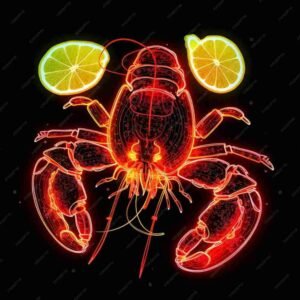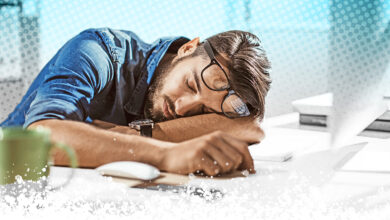Creating Stunning Glow Effect Art with Larry the Lobster

Larry the Lobster Glow Effect Art: a popular character from the animated series SpongeBob SquarePants, is known for his vibrant, bold colors and cheerful personality. As a subject of artistic exploration, Larry’s colorful design makes him a fantastic candidate for experimenting with the glow effect in art. The glow effect, which adds a sense of light radiating from the character or object, helps bring out the personality and depth of Larry in fan art, merchandise, and animation.
In this article, we’ll dive into the basics of creating a glowing effect using Larry the Lobster as an example. We’ll explore various techniques like color selection, layering, digital tools, and the importance of composition. Whether you’re a traditional artist or working with digital tools, learning these methods will enhance your ability to bring characters like Larry to life with a stunning glow effect.
Understanding the Glow Effect
The glow effect is a technique used in both traditional and digital art to create the illusion of light emanating from an object. This effect can make a piece look more dynamic, giving it depth and energy. For Larry the Lobster, this effect can be used to amplify his bright red color, making him stand out more against a contrasting background or creating a sense of warmth and vibrancy.
When applying the glow effect to Larry the Lobster, there are four primary areas to focus on: color selection, layering techniques, digital tools, and composition. Mastering these techniques will not only enhance your art but will also help you create more engaging visuals that capture the lively personality of this beloved character.
1. Color Selection: The Foundation of the Glow Effect
Color is a critical part of any artwork, but it becomes even more essential when trying to create a glowing effect. To make Larry the Lobster glow, the right colors must be chosen with care.
- Bright, Warm Colors: Larry is famous for his bright red appearance. Using a palette of warm colors like red, orange, and yellow helps create a glowing effect that looks natural and vivid. These colors simulate warmth and light, making Larry appear to shine.
- Complementary Colors: Colors that contrast with Larry’s red, like green or blue, help his bright tones stand out. Complementary colors make the glow effect more striking by enhancing the visual contrast, allowing Larry’s vibrant shades to dominate the piece.
- High Saturation: Saturated colors, which are rich and intense, contribute to the illusion of light. Highly saturated reds and oranges used for Larry’s body create a bold and eye-catching glow.
2. Layering Techniques: Building Depth and Light
Layering is one of the most important techniques to create the glow effect in traditional or digital art. It involves gradually building up color and light to give your subject depth and dimension.
- Base Layer: Start by creating a solid base color that matches Larry’s primary red tone. This forms the foundation of your artwork, upon which you will build the glowing effect.
- Highlighting: Use lighter colors like orange or pale red to highlight areas where light would naturally fall, such as the top of Larry’s claws, his shoulders, and his tail. This gives the impression that light is hitting these areas, creating a glowing effect.
- Blending: Smooth blending between light and dark areas will create a more natural glow. Use tools such as brushes or digital tools to blend the colors gradually. This soft transition helps avoid harsh lines and gives a realistic glow.
3. Digital Tools: Enhancing the Glow Effect
Digital tools offer a variety of ways to amplify the glow effect beyond what can be achieved with traditional methods. Programs like Adobe Photoshop, Illustrator, or Procreate have features that make creating glowing art much easier.
- Soft Brushes: Use soft brushes to create smooth gradients, especially around Larry’s edges. A soft brush helps simulate how light diffuses naturally, making the glow look realistic.
- Layer Effects: Tools like “Outer Glow” or “Drop Shadow” in digital programs can add a luminous quality to the character. These effects can be applied to make Larry’s outline appear as though it is glowing, making him look radiant and larger than life.
- Color Dodge: A blending mode such as “Color Dodge” can enhance the brightness and intensity of the colors, giving the glow effect more power. This technique can make the glow stand out dramatically against a darker background.
4. Composition and Background: Setting the Scene
In addition to focusing on Larry the Lobster’s colors and highlights, the background and overall composition of your artwork play a crucial role in emphasizing the glow effect.
- Dark Background: A dark background will make Larry’s bright glow stand out more prominently. The contrast between the darkness and Larry’s radiance will draw viewers’ eyes directly to him.
- Additional Light Sources: Introducing other light sources, such as underwater lighting, sunbeams, or reflected light, can enhance the glowing effect. These extra sources of light make the scene more immersive and realistic, highlighting Larry in a way that feels natural and engaging.
Applications in Art: From Fan Art to Animation
Larry the Lobster’s bold colors and lively personality make him an ideal subject for fan art, merchandise, and even animation. Artists from all over the world enjoy creating dynamic pieces featuring Larry, using glow effects to make their art stand out.
- Fan Art and Merchandise: Larry’s bright colors and strong silhouette make him popular in fan art, especially when using the glow effect. Whether for posters, T-shirts, or stickers, the glow adds energy and excitement to any design.
- Animation: In animation, glow effects can be used to emphasize important moments. For example, when Larry lifts weights, applying a glow effect can amplify the intensity and action, making the scene more exciting and engaging for viewers.
Conclusion: Larry the Lobster Glow Effect Art
Creating a glowing effect for a character like Larry the Lobster is a wonderful way to make your art more vibrant and dynamic. By carefully choosing colors, applying layering techniques, and using digital tools, you can bring Larry’s bold personality to life. The glow effect allows artists to explore light and color in new ways, giving the character a fresh, energized appearance.
Whether you are working on fan art, merchandise, or animation, the glow effect adds a layer of visual interest that can captivate audiences. Mastering this technique will help you elevate your artistic work, making it stand out in a world where creativity shines brightly.
In summary, understanding the glow effect through careful color selection, layering, digital enhancement, and thoughtful composition is key to successfully portraying characters like Larry. Whether you are an amateur or a professional, the glow effect will add an enchanting and dynamic element to your art.
FAQs: Larry the Lobster Glow Effect Art
Q: What is the glow effect in art?
A: The glow effect in art creates the illusion of light emanating from an object or character, adding depth and vibrancy.
Q: How do you choose colors for a glow effect?
A: Choose bright, warm colors like reds, oranges, and yellows. Complementary colors and high saturation also help create a stronger glow.
Q: Can you create a glow effect using traditional art?
A: Yes, traditional art can achieve a glow effect using layering, highlighting, and blending techniques.
Q: What digital tools can enhance the glow effect?
A: Digital tools like Photoshop offer effects like “Outer Glow” and blending modes like “Color Dodge” to enhance the glow effect.
Q: Why use a dark background for glow effect art?
A: A dark background increases contrast, making the glow stand out more prominently and enhancing the visual impact.




